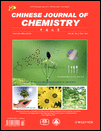Promotion on Nucleation and Aggregation of Calcium Oxalate Crystals by Injured African Green Monkey Renal Epithelial Cells
Abstract
The purpose of this work was to detect the properties of African green monkey renal epithelial cells (Vero) after oxidative injury and to study the mediation of the injured Vero on aggregation and formation of calcium oxalate crystals. This injury model was induced by 0.15 mmol/L H2O2 according to the pretest evaluation. The results suggested that H2O2 could injure Vero significantly and decrease cell viability in a time-dependent manner for exposure time of 0.5–2 h. After cell injury, the indexes connected with oxidative injury changed. The malondialdehyde (MDA) content and osteopontin (OPN) expression increased, while superoxide dismutase (SOD) level decreased. It resulted in the increase of both the amount of CaOxa crystals and the degree of crystal aggregation on the injured cells. This work indicated that injured cells promoted the formation of calcium oxalate monohydrate (COM) crystals, thus increased the risk of formation of urinary stone.




